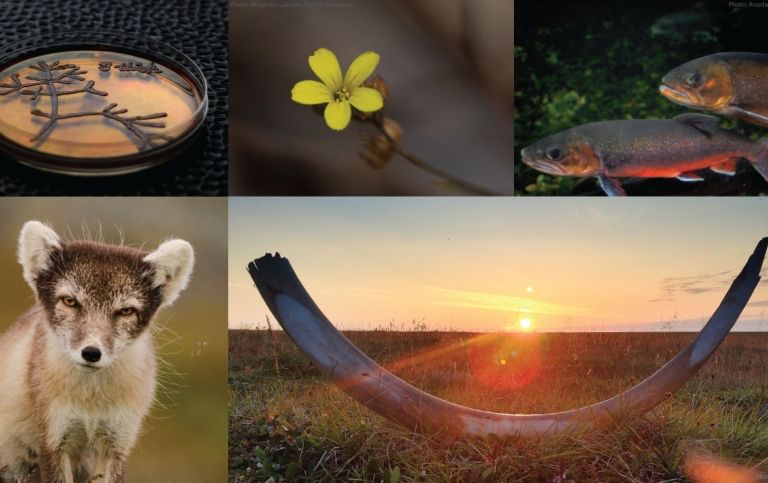
Mateusz Baca
@mateuszbaca.bsky.social
@mateuszbaca.bsky.social

Brown bears participated in Roman spectacles, read more in our latest paper! @lpcg.bsky.social #BaBBe
10.10.2025 05:19 — 👍 11 🔁 5 💬 1 📌 0This #FestiwalNauki at CeNT, we have two aDNA sessions to feed your curiosity!
Take this opportunity to learn about the methods and achievements in aDNA with @martynamolak.bsky.social and @mateuszbaca.bsky.social
Register with sekretariat@cent.uw.edu.pl from the 15th of September. Details in 🧵
Saturday, September 27, 2025 - 3:00 PM to 4:30 PM
During the last ice age, Europe was inhabited by many species of animals, such as mammoths and cave hyenas. We can learn about their history by examining the DNA preserved in their remains with @mateuszbaca.bsky.social



Last week at the 7th conference on Species and genetic diversity of the Pleistocene and Holocene fauna in Eurasia in Smoleń, Poland.
08.09.2025 04:56 — 👍 4 🔁 1 💬 0 📌 0


Did you get a chance to look at @kaaviya.bsky.social and @mateuszbaca.bsky.social posters?
@martynamolak.bsky.social had a great talk too!
@isba11.bsky.social @isbarchaeology.bsky.social

NEW PAPER ALERT!
@naturalice.bsky.social @popovicdani.bsky.social @mateuszbaca.bsky.social
academic.oup.com/zoolinnean/a...

Are you attending ISBA & working on ancient animal DNA? On Tuesday 26th ~2-4pm we will Board the AaRC with an in-person event! Join us for seminars, a round table event, and of course networking!
If you'd like to attend and/or present, sign up below
@isba11.bsky.social @aarc-community.bsky.social
#aDNA #aRNA #sedaDNA #AncientGenomics #consgen #conservationgenetics #conservationgenomics 🧪
05.06.2025 12:29 — 👍 6 🔁 1 💬 0 📌 0Thanks to #NationalMuseumofScotland for being such wonderful hosts to our students and fantastic collaborators. Your support makes research like this possible!
23.05.2025 06:07 — 👍 5 🔁 1 💬 0 📌 0

@mateuszbaca.bsky.social at the CeNT Symposium yesterday, following the ceremonial naming of the main auditorium as the Piotr Węgleński Auditorium, in honor of the late Prof. Piotr Węgleński.
A meaningful tribute to a remarkable scientist and mentor.
Huge congratulations to @naturalice.bsky.social, one of our PhD students, for winning the Best Oral Presentation at Młodzi w Paleontologii XIII in Kraków last week!
Her talk on bats🦇stole the show, and we couldn’t be prouder. Way to go!
#WomenInScience #BatScience #LPCG


@mateuszbaca.bsky.social at #ECM9 Did you catch his talk on field voles?
01.04.2025 04:54 — 👍 3 🔁 1 💬 0 📌 0

Wrapped up an amazing public outreach event at UW!
Our lab ran a hands-on workshop on aDNA for #DOKO —starting with a lecture by @naturalice.bsky.social and then some real lab work with Gabriela and @kaaviya.bsky.social
Introducing aDNA to curious minds! #ScienceForEveryone

Reconstructed evolutionary history of the field vole species complex. Arrows denote identified instances of gene flow. On the left axis, there are dates of particular events based on the mtDNA phylogeny (median estimates with 95% HPD’s), while on the right axis, there are dates based on nuclear data (extreme values).
The pattern of divergence with gene flow and hybridisation may be explained in a framework referred to as mixing-isolation-mixing driven by phases of landscape opening and reforestation connected with stadial–interstadial cycles
We will appreciate your comments to improve the manuscript
The Italian lineage remained largely isolated with subsequent episodes of geneflow from continental populations probably at times of greater connectivity eg. with the emergence of Great Adriatic Po Plain
23.01.2025 11:01 — 👍 0 🔁 0 💬 1 📌 0
(A) Multidimensional scaling plot of field voles based on IBS matrix calculated using ANGSD. (B) Maximum Likelihood tree obtained using TreeMix with one migration edge, as suggested by the “Evanno” approach. (C) Branch-specific fb statistic heatmap. (D) Top admixture graph of the main field vole lineages obtained using AdmixtureBayes.
We found a recurring signals of geneflow between and within field vole lineages with some of the analyses suggesting a hybrid origin of the Mediterranean field voles
23.01.2025 11:01 — 👍 0 🔁 0 💬 1 📌 0
(A) Range of field vole species complex and sampling localities, with circles indicating modern samples and squares indicating ancient samples. (B) Sampling localities coloured according to main mtDNA lineage, with samples belonging to the short-tailed field vole (M. agrestis) coloured according to geography. Modern localities are denoted by filled circles, whereas other symbols represent ancient localities. (C) Bayesian phylogeny of field vole mitogenomes calibrated using radiocarbon-dated specimens. Circles at nodes indicate a posterior probability above 0.95. Grey bars denote 95% highest posterior density intervals of node ages. The tips are labelled with symbols corresponding to B. Labels include the sample ID and age, with the prefix ‘e’ indicating the estimated age. Direct radiocarbon-dated samples are indicated in red. Relation to the cyt-b mtDNA lineages distinguished within short-tailed field voles is given.
We identified a new field vole lineage from the Late Pleistocene Italy
23.01.2025 11:01 — 👍 1 🔁 0 💬 1 📌 0
Divergence times of the main mtDNA lineages in various rodents. Each point corresponds to the median estimate of mtDNA divergence, and whiskers denote the 95% HPD intervals. The estimates are based on mitogenomic phylogenies calibrated using directly radiocarbon dated specimens
Field voles comprise three cryptic species: Portuguese, Mediterranean and short-tailed field voles. We recalibrated their divergence using the mitogenomes of the radiocarbon dated samples. It took place in MIS7 and MIS5 similar to the divergence of other open habitat species
23.01.2025 11:01 — 👍 0 🔁 0 💬 1 📌 0New preprint alert🚨
We posted the first version our reconstruction of the evolutionary history of field vole species complex. We generated more than a 100 mitochondrial and 26 nuclear genomes from ancient and modern field voles.
Here is what we found, a 🧵
#ancientDNA
t.co/hHy1vakGr0
Have a look at our first 2025 Blog entry from @aarc-community.bsky.social where we interviewed @maridehasque.bsky.social and Ophélie Lebrasseur about the research projects they presented in the November 2024 #AaRCTikTalks.
animal-adna.org/blog/2025/01...
#ancientDNA #aDNA #mammoth #chicken

At Stockholm University, we are now starting a 2-year Master’s programme in Evolutionary Genomics!
Topics include population genetics, phylogenetics, molecular & genome evolution, DNA sequencing, bioinformatics, and palaeogenetics.
Please spread the word!
www.su.se/english/sear...
Want to become a palaeogeneticist?
🧬🧪🦷💀🦣🧬
This MSc programme coult be a good start!